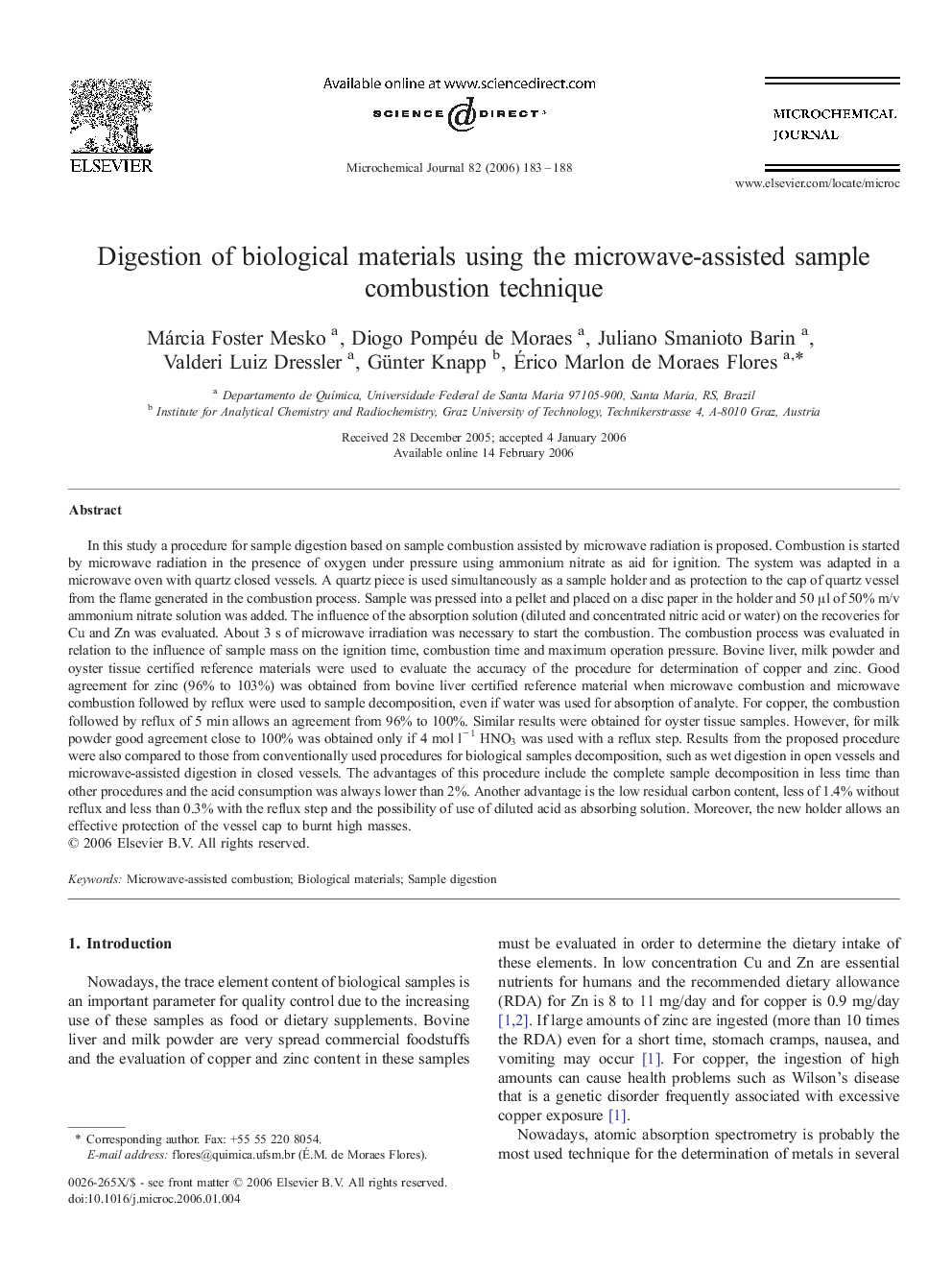| Article ID | Journal | Published Year | Pages | File Type |
|---|---|---|---|---|
| 1228614 | Microchemical Journal | 2006 | 6 Pages |
In this study a procedure for sample digestion based on sample combustion assisted by microwave radiation is proposed. Combustion is started by microwave radiation in the presence of oxygen under pressure using ammonium nitrate as aid for ignition. The system was adapted in a microwave oven with quartz closed vessels. A quartz piece is used simultaneously as a sample holder and as protection to the cap of quartz vessel from the flame generated in the combustion process. Sample was pressed into a pellet and placed on a disc paper in the holder and 50 μl of 50% m/v ammonium nitrate solution was added. The influence of the absorption solution (diluted and concentrated nitric acid or water) on the recoveries for Cu and Zn was evaluated. About 3 s of microwave irradiation was necessary to start the combustion. The combustion process was evaluated in relation to the influence of sample mass on the ignition time, combustion time and maximum operation pressure. Bovine liver, milk powder and oyster tissue certified reference materials were used to evaluate the accuracy of the procedure for determination of copper and zinc. Good agreement for zinc (96% to 103%) was obtained from bovine liver certified reference material when microwave combustion and microwave combustion followed by reflux were used to sample decomposition, even if water was used for absorption of analyte. For copper, the combustion followed by reflux of 5 min allows an agreement from 96% to 100%. Similar results were obtained for oyster tissue samples. However, for milk powder good agreement close to 100% was obtained only if 4 mol l− 1 HNO3 was used with a reflux step. Results from the proposed procedure were also compared to those from conventionally used procedures for biological samples decomposition, such as wet digestion in open vessels and microwave-assisted digestion in closed vessels. The advantages of this procedure include the complete sample decomposition in less time than other procedures and the acid consumption was always lower than 2%. Another advantage is the low residual carbon content, less of 1.4% without reflux and less than 0.3% with the reflux step and the possibility of use of diluted acid as absorbing solution. Moreover, the new holder allows an effective protection of the vessel cap to burnt high masses.
